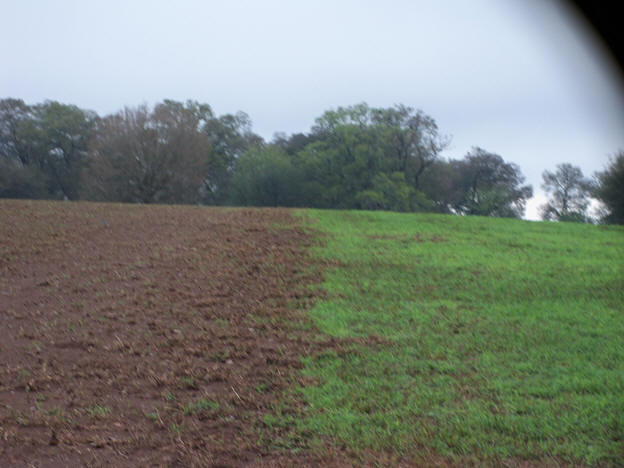- Return to Article Of The Month index
Bermudagrass Renovation Demonstration Trial
May , 2021
Dr. Joao Vendramini &
Dr. Maria Silveira, UF/IFAS Range Cattle Research & Education
Center
Bermudagrass (Cynodon dactylon) is one of
the most important species in the southeastern USA with about 20 million
acres of planted areas for livestock grazing and hay. Some of the
bermudagrass cultivars used for grazing, hay, or silage production in
Florida includes Coastal, Tifton 85, Alicia, Jiggs, Russell, Tifton 44, and
Mislevy.
Forage and beef cattle producers in Pasco Co., FL
had the perception that bermudagrass hayfield production declines every 5
years and disking the hayfields periodically would renovate the field and
increase forage production. There was a misperception that the decline in
forage production was due to soil compaction due to frequent traffic of
machines for forage harvest. However, there is strong evidence from research
projects conducted at the UF/IFAS Range Cattle Research and Education Center
that pasture disking does not increase forage production, and it may
actually decrease production. In addition, research projects have
demonstrated that one of the main causes for a decrease in production and
persistence of bermudagrass hayfields in Florida was insufficient potassium
fertilization and harvest practices.
In association with Ed Jennings, former Livestock Extension Agent in
Pasco Co., we conducted an on-farm demonstration to evaluate the effects of
disking and fertilization in a Tifton 44 hay field. A Tifton 44 hay field
with declining production and persistence was identified by a producer and
10 acres selected for the trial. Half of the area (5 acres) was disked with
a tandem disk 3 times and rolled, as recommended by the producers. The area
was disked on February 2nd. The other half of the area was not
disked. The entire area was fertilized with 300 lb/acre of 21-00-21 on
February 23rd.
The forage production and nutritive value in the hayfield was evaluated
on May 2nd and September 15th.
Forage production was 2.5 times greater in the non-disked than disked
hayfield in the first harvest (Table 1). In the second harvest, the forage
production was still 1.2 times greater for the non-disked than disked area.
Considering the 2 harvests, the non-disked area produced a total of 7,000 lb
DM/acre versus 5,200 lb DM/acre for the disked area.
The disked area had greater crude protein and TDN in the first harvest
(Table 1) because the forage was from new plants germinating from the
rhizomes and tops, while the plants in the non-disked area were established
and had greater proportion of stems and older tissues. There was no
difference in nutritive value in the second harvest.
After the second harvest, the ground cover was evaluated and there was 93
vs. 82% bermudagrass ground cover in the non-disked vs. disked area.
Table 1. Forage production and nutritive value of bermudagrass hayfields
disked or non-disked for renovation.
| Harvest 1 | Harvest 2 | |||||
| Forage Production |
Forage Production |
|||||
| Treatment | (lb DM/ac) | CP (%) | TDN (%) | (lb DM/ac) | CP (%) | TDN (%) |
| Non-disked | 1,800 | 11.8 | 53 | 5,200 | 15.8 | 53 |
| Disked | 700 | 17.4 | 57 | 4,500 | 15.3 | 53 |
This extension demonstration proved that disking hayfields for renovation
purposes decreases forage production, increases cost due to disking, and
increases the chances of soil erosion and nutrient loss. Proper
fertilization, primarily with potassium, is an effective management practice
to increase bermudagrass forage production and persistence. It is expected
that approximately 35 forage producers and 7,000 acres of bermudagrass hay
production in Pasco, Sumter, Citrus, Hernando, and Hillsborough counties
were impacted by this educational effort.

Photo above is of pasture that was disked (left) vs. non-disked (right)

